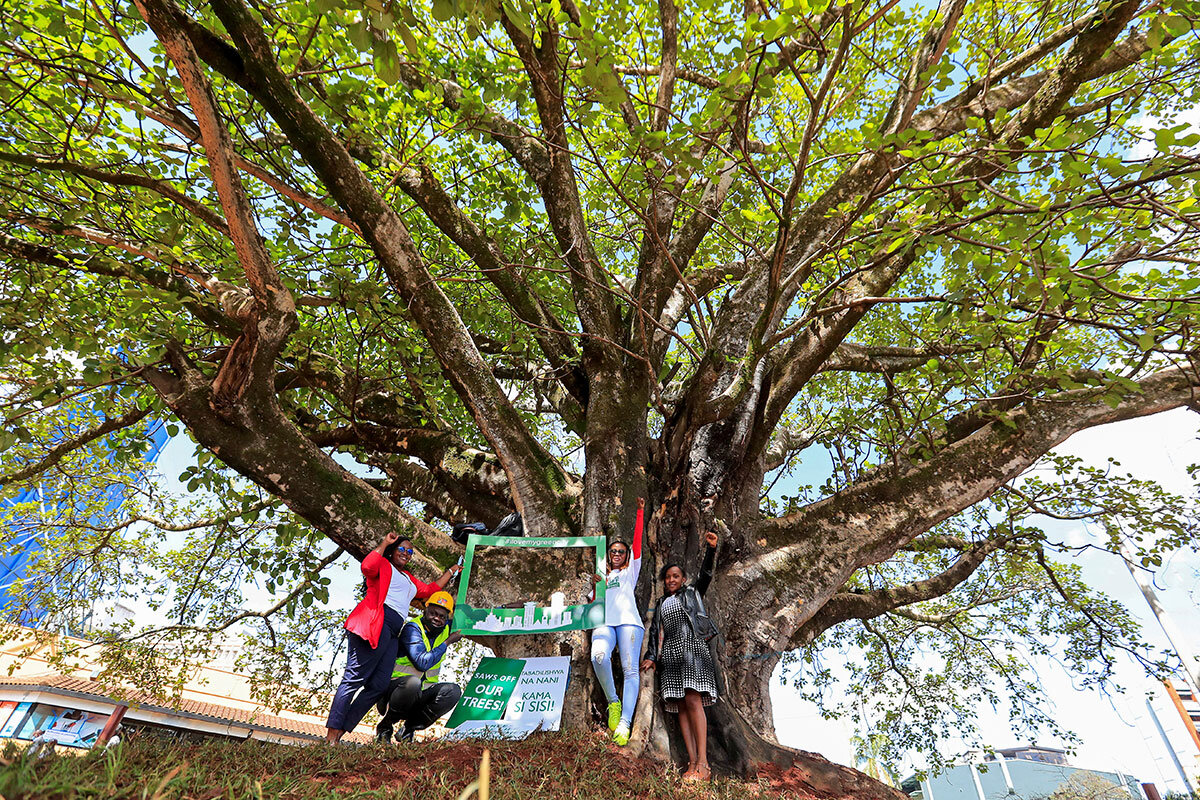A tree (still) grows in Kenya

 Amelia Newcomb
Amelia Newcomb
In the perennial contest between trees and the built environment, trees often lose out. But in Nairobi, Kenya, last week, a century-old fig tree held its ground in a face-off with a massive new highway project. After a vocal campaign by environmentalists, President Uhuru Kenyatta decreed that the tree’s graceful canopy, some four stories tall, will continue to offer local balm while the highway is redirected toward a new route.
The outcome recognizes the practical impact of trees, particularly mature ones. Those include cooling overheated neighborhoods and mitigating pollution. Beyond that, as the Monitor noted in a report on urban forestry last year, crime can decline and property values rise in areas where tree cover expands, as happened in Baltimore, Maryland. Or residents turn far less frequently to prescription antidepressants, as happened in London.
That speaks to the building blocks of community, to “the sense of rest” that one Boston leader referenced after progress this summer in rethinking a road that threatened 121 venerable trees in an underserved area. Indeed, pop culture and literature, secular and religious, are replete with reminders of what trees teach humans about resilience and stewardship. In Nairobi, President Kenyatta called the fig tree a “beacon of Kenya’s cultural and ecological heritage.” Kenyan environmentalist Elizabeth Wathuti told Reuters it was a symbol of the city’s aspirations – a beacon of hope.




